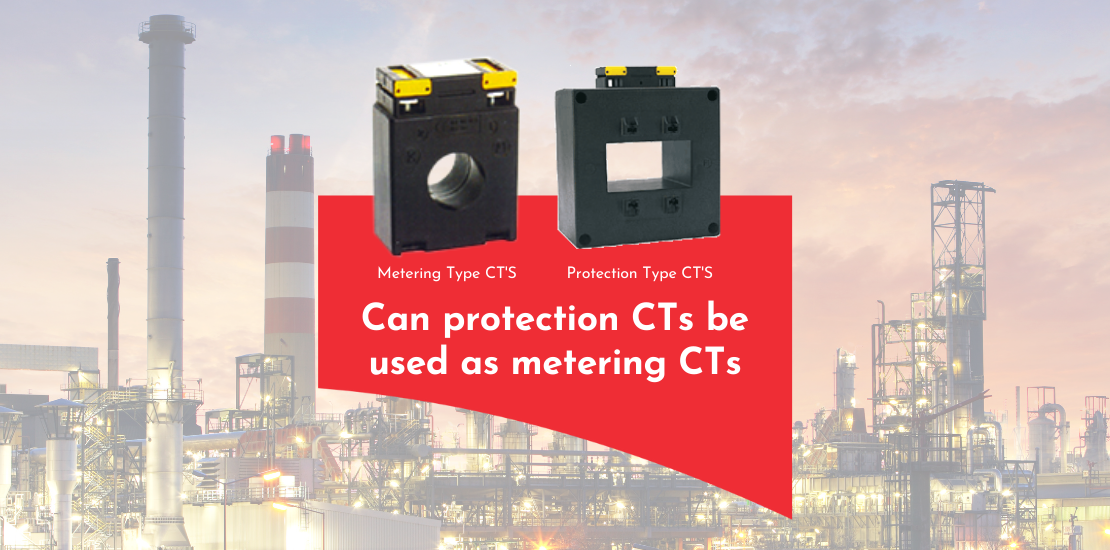- September 23, 2021
- Posted by: Dyaneshwar Nirmale
- Category: Digital Meters

This one mistake in connections can turn your CTs into dangerous devices!
Current transformers are classified into two main types based on their application: metering type current transformers and protection type current transformers. The design of the two types is similar. In fact, protection type current transformers are more durable. Hence, ‘Why not use protection type current transformers for metering?’ is a frequently asked question. In many developed countries, it is common to find CTs that offer both protection and metering. In many cases, protection type CTs are used for metering if high accuracy is not needed for revenue purposes. However, the two types of CTs are designed for specific applications.
The design difference between protection type CTs and measuring type CTs means that the two current transformer types handle different levels of current. This is a key reason why their roles cannot be interchanged. Current transformers are designed with application-specific current-carrying capacity.
What do measuring type CTs do?
As opposed to protection type CTs which are designed for protection, metering type current transformers are designed for high accuracy in measurement when the primary current could be between 1% to 120% of the rated current. The secondary side of the metering CT is connected to power measuring instruments such as meters.
An Instrument Safety Factor (ISF) is determined for metering type CTs to protect the meters from damage during fault conditions.
For instance, if the ISF of a metering type current transformer is 3, it means if the primary current in the CT is 3 times that of the rated current, the CT core will saturate and limit the current reaching the meters. The meters are thus protected from the high levels of current.
What will happen if protection type CT is used for metering?
The protection type current transformers are designed to operate under high levels of fault current. If they are connected to meters under normal operation, it will affect the measuring accuracy of the meters. Additionally, The core of the protection type CT has a much higher saturation point than that of the metering type CT. If a fault occurs, the core of the current transformer will not saturate under high current. Thus, more than 10-20 times the rated current level will be passed on to the meters, causing severe damage to them.
What will happen if metering CTs are used for protection
If metering current transformers are connected to protection relays, the CT core will quickly saturate under fault conditions. This will heavily distort the secondary output current. Now, the relay will fail to operate, and the safety and stability of the entire electrical system will be threatened.
Conclusion
The saturation point of the current transformer core determines its functioning. The lower saturation point of the metering CT core is the key to protecting the meters connected to the CT during fault conditions. Since the core of protection type CTs has a higher saturation point, using this current transformer for meeting essentially defeats the core goal of protecting the meters. Hence, measuring and protection type CTs should only be used in applications for which they are designated.
